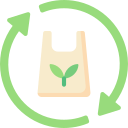Smart Sorting and AI-Driven Infrastructure
High-speed cameras paired with machine learning now recognize garment types and condition in milliseconds, sending intact pieces to reuse and damaged ones to recycling. The result is higher value capture, fewer human injuries, and transparent data streams. Share your local facility’s challenges so we can crowdsource fixes that stick.
Smart Sorting and AI-Driven Infrastructure
Embedded IDs and scannable tags reveal fiber blends, dye classes, and repair history, removing guesswork at end of life. This data accelerates sorting lanes and supports regulatory reporting. If you’re piloting passports, comment on interoperability gaps; we’ll feature standout strategies to align retailers, recyclers, and auditors.









